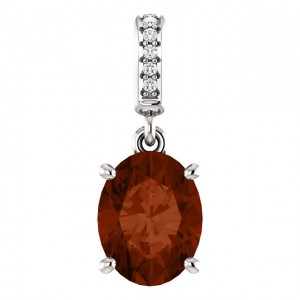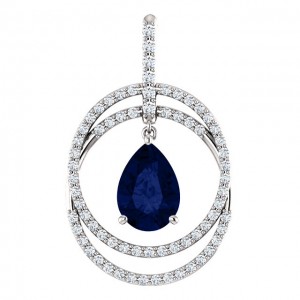Pendants are one of the oldest forms of jewelry. It was customary for ancient tribesmen to hang totems around their necks to signify their allegiance to a tribe, culture or belief. Since then, pendants have evolved into one of the most fashionable jewelry statements. From elegant charms to commemoration lockets, pendants make for a fundamental part of a modern woman’s wardrobe.
Diamond Solitaire Pendants
Apart from the size of the stone, the main subject of debate in solitaire pendants is the diamond cut. You can buy loose diamonds separately and have them turned into pendants at your favorite jewelry store. Diamonds are available in a variety of sizes ranging from smaller than 1 carat to 10 carats or more. You may choose from the most beautiful cuts for pendants – pear and cushion – or the most popular – princess and emerald.
[caption id="attachment_495" align="aligncenter" width="300"] Gemstone Pendants[/caption]
Gemstone Pendants[/caption]
Jewel Circle
While it’s not always exactly a circle, a common type of pendant is the arrangement of gemstones in a usually circular shape. The best thing about jeweled circles is that it can feature different kinds of gemstones in the same setting.
Lockets
Lockets are pendants that open up to reveal a personal photograph or an item of intimate value. While you might know about these from age old movies, lockets have transformed into brilliant and innovative items of jewelry, open to the trendiest of designs.
Carat and Cut
Diamond weight is measured in carats (a carat equals 200 milligrams). The heavier and larger the diamond, the higher is its price. Besides being more expensive, larger diamonds are also rarer than smaller ones.
[caption id="attachment_496" align="aligncenter" width="300"] Diamond Colored Pendants[/caption]
Diamond Colored Pendants[/caption]
A perfectly cut diamond reflects the maximum amount of light for its shape. For example an ideally cut pear-shaped diamond will reflect more light than a poorly cut pear-shaped diamond. Depending on the quality of the cut, diamonds are rated as Ideal, Premium, Very Good, Good and Fair & Poor in decreasing order of quality. A Very Good cut diamond forms the middle ground between maximum reflection and large size – the more polished a diamond and better the cut, the smaller it gets in size.
Color and Clarity
Color in a white diamond is undesirable and limits its ability to reflect maximum light. Based on the system of grading by GIA, white diamonds are categorized into 23 color ratings starting from D (completely colorless) to Z (light yellow color). While D grade diamonds are extremely rare, most people find grades G, H and I to be the most preferable.
The clarity of a diamond refers to the amount of blemishes and inclusions in it. There are 11 clarity ratings for diamonds on the GIA clarity scale. An FL (or flawless) diamond is free from all blemishes (surface flaws) and inclusions (internal flaws) while a VVS1 or VVS2 (or Very Very Slightly Included 1 or Very Very Slightly Included 2) diamond is perfect to the untrained eye and takes only a trained gemologist to identify the flaws in it. An I2 (Included 2) diamond has flaws visible without magnification. The whole scale ranges as FL, IF, VVS1, VVS2, VS1, VS2, SI1, SI2, I1, I2 and I3 in decreasing order of clarity.
Now that you’re one step closer to buying diamond pendants, head to Hello Diamonds to check the exquisite collection.
